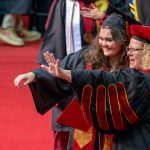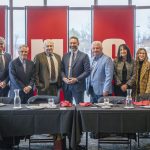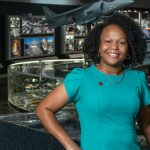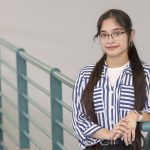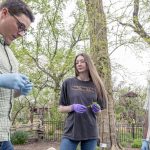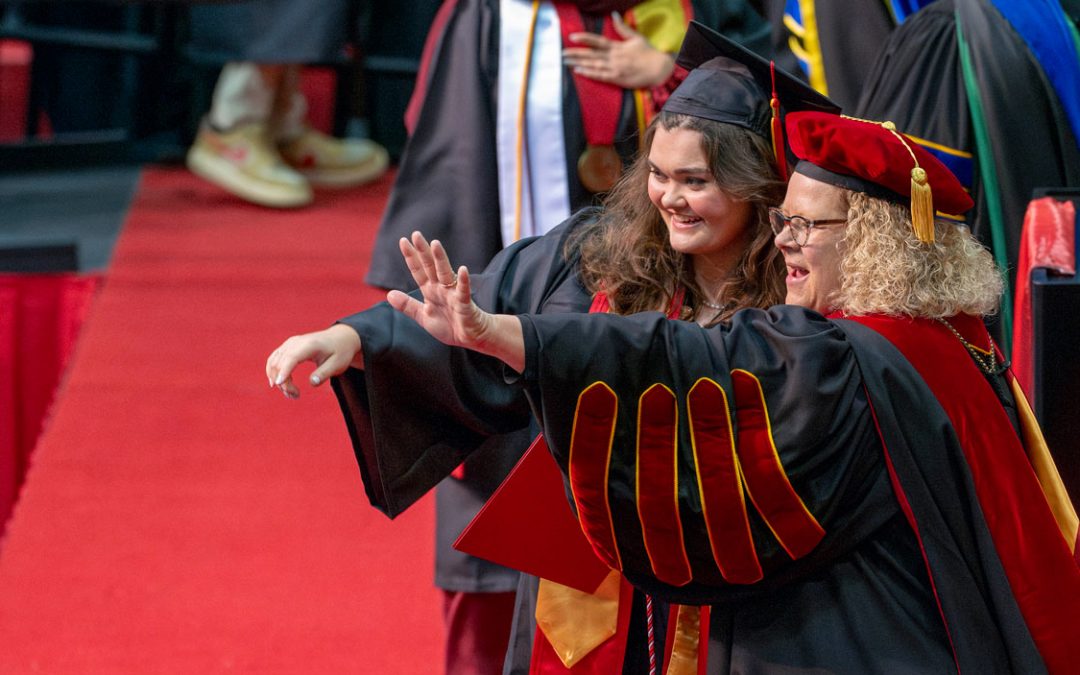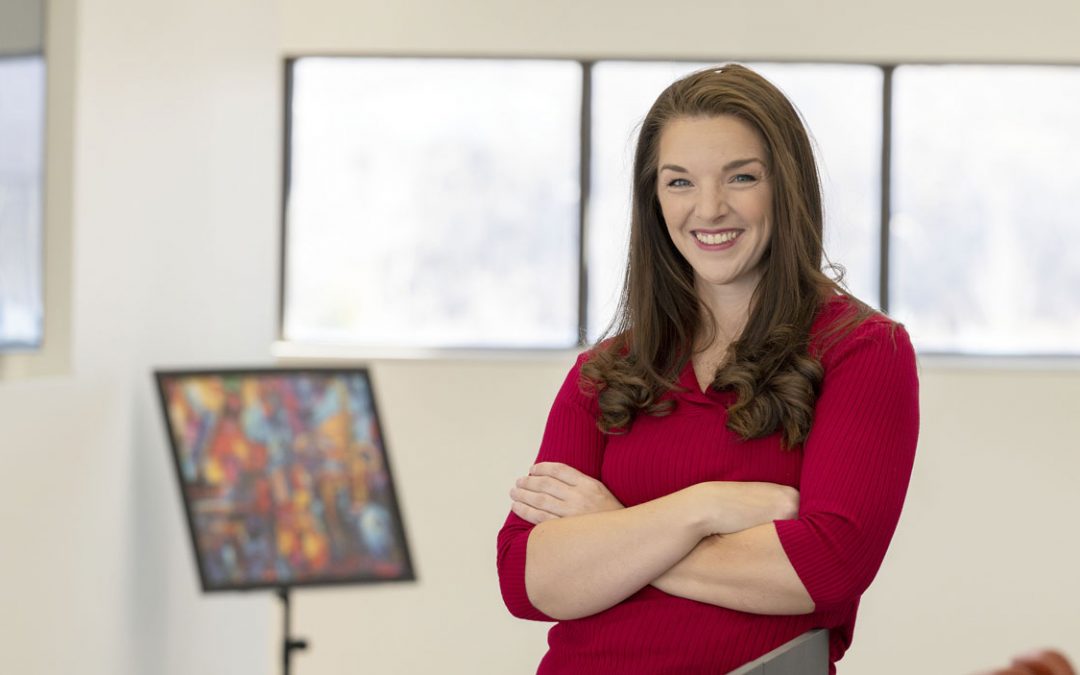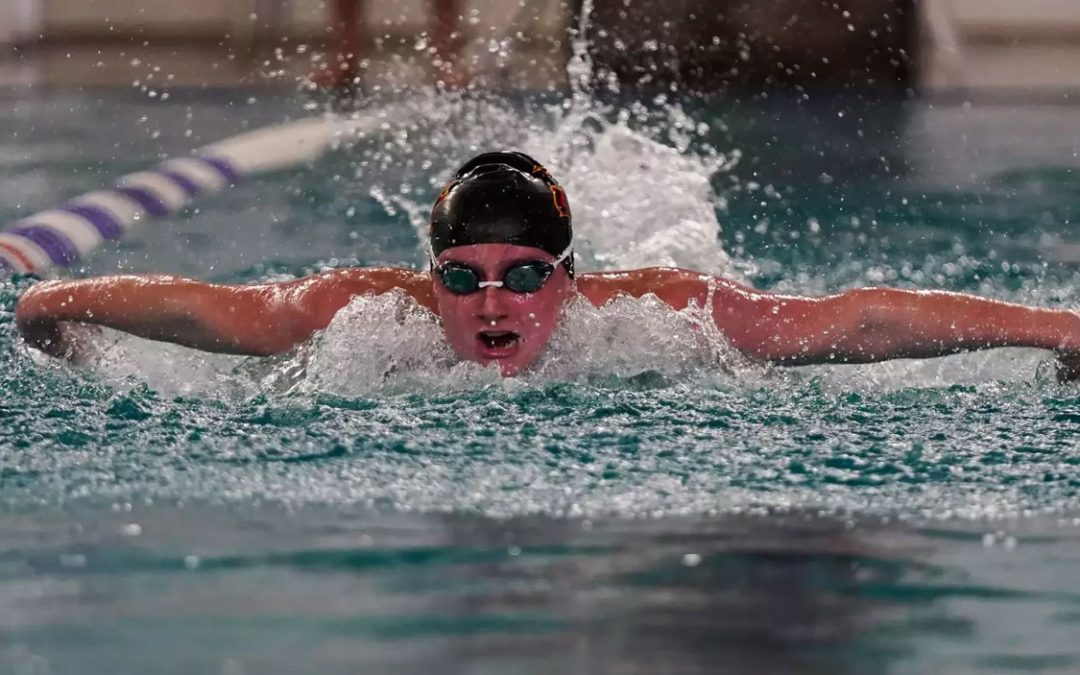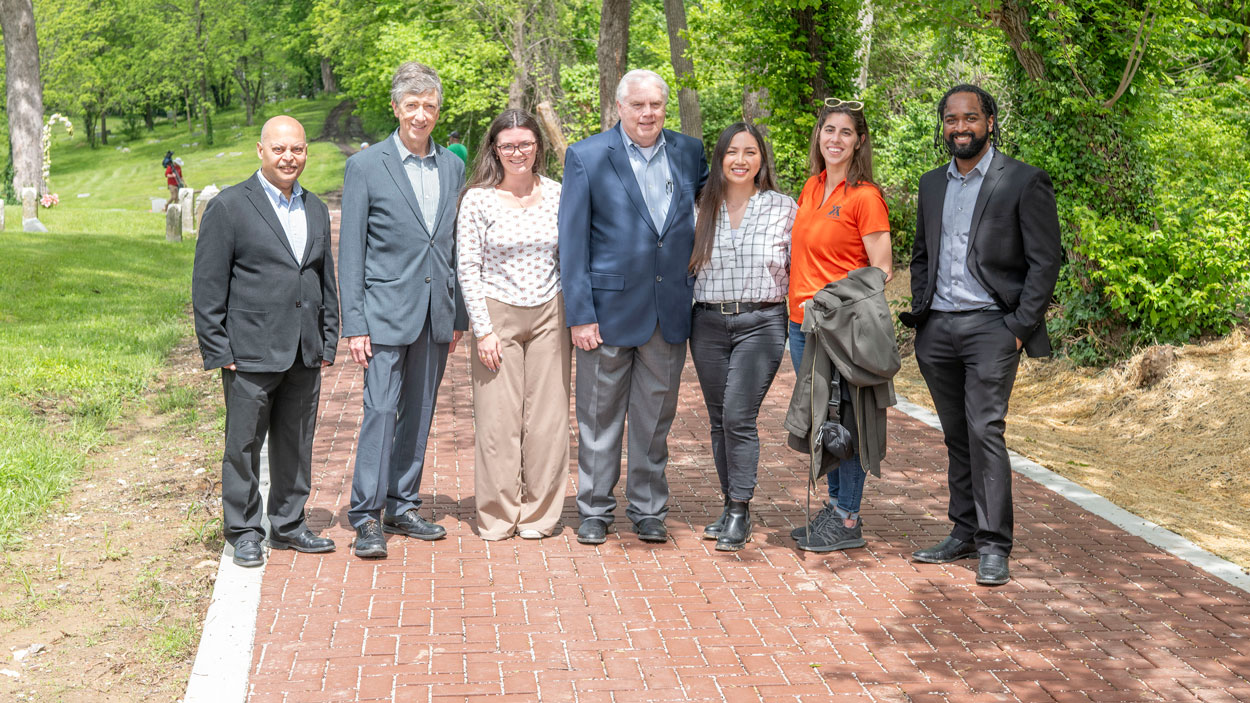
Greenwood Cemetery celebrated the official opening of a new access road primarily designed by four students in the UMSL/Washington University Joint Undergraduate Engineering Program. From left: Sanjiv K. Bhatia, UMSL’s director of graduate computer science programs; Joseph O’Sullivan, dean of the joint engineering program; Lexi Twillmann, a 2023 graduate of the joint engineering program; Gary Moore, the program’s civil engineering director; Sindy Naruy Pham, a 2024 graduate of the joint engineering program; Trinity Lopez, a senior in the joint engineering program; and Dwayne Perry, a 2024 graduate of the joint engineering program. (Photos by Derik Holtmann)
Dwayne Perry wore a big smile on his face as Shelly Morris cut the symbolic burgundy ribbon Thursday afternoon at Greenwood Cemetery. The ends of the ribbon cascaded down to the state-of-the-art road, a feat of engineering that was the result of countless hours of hard – and selfless – work from Perry and dozens of individuals and a handful of companies and organizations over the past two years.
When the project started in 2023, Perry was a student in the University of Missouri–St. Louis/Washington University Joint Undergraduate Engineering Program, volunteering his time as part of a small group of students – along with Lexi Twillmann, Sindy Naruy Pham and Trinity López – working with faculty member Gary Moore to help solve a dilemma at the historic cemetery in north St. Louis County.
The road leading to the back section of Greenwood Cemetery was built on a steep slope and any significant amount of rainfall would wash out the gravel on the road. Cars driving down to pay their respects to loved ones would inadvertently carve deep tire trenches and make the road impassable.
Thursday’s ribbon-cutting ceremony, attended by more than 100 people including local TV stations, marked the official opening of the new road. UMSL engineering students played a significant role in assessing the project and designing the pathway.
The importance of the project became clear while working through the process, as Perry told the crowd.
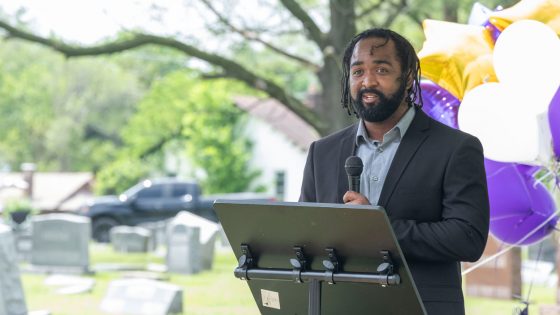
Dwayne Perry, a 2024 graduate of the joint engineering program, was one of eight speakers for the ribbon-cutting ceremony.
“Greenwood Cemetery is more than just a burial ground,” said Perry, now a graduate of the joint engineering program and an associate engineer at Ameren, who was one of eight speakers on Thursday. “It’s a resting place for thousands of Black men and women who shaped the history of St. Louis. To be part of restoring and honoring that history felt, and still feels, powerful. It wasn’t just about designing an entrance. It was about helping to create a space that welcomes the community back to a place that holds their roots, their ancestors and their stories. I felt a deep sense of responsibility to approach this work with care and respect. It reminded me that engineering is more than math and design. It’s also about people, culture and preserving things that matter to a community.”
Greenwood Cemetery is set on 32 acres in the town of Hillsdale. Established in 1874, the cemetery was the first African-American non-sectarian cemetery in St. Louis, and more than 50,000 are buried on the grounds.
As founding members of the Greenwood Cemetery Preservation Association, along with Etta Daniels and others, Raphael and Shelly Morris have dedicated their lives to restoring the cemetery, which was often neglected throughout its history. Their decade-long passion has involved removing trash and large items that had been dumped on the grounds, along with mowing and weeding so burial plots became accessible for the first time in years.
Making a tangible improvement to the road has long been a priority.
Raphael Morris reached out to Civil Design Inc. for guidance, and CDI in turn reached out to Engineers Without Borders and the joint engineering program at UMSL. When Gary Moore, a senior lecturer and civil engineering director for the program, heard about the need, he wanted to help. Not only would the project offer the type of hands-on experience faculty members strive to offer their students, but Moore saw the opportunity to make an impact.
“It’s more than just a numbers game for an engineer,” Moore said. “You’re part of the community, you’re helping the community. I got into engineering to improve the quality of life for my community while protecting the environment.
“A lot of our faculty in the joint engineering program are working professional engineers. We bring real projects into the classroom, and we share those experiences and use those as part of our assignments. But the students don’t grasp it until they actually have to apply it. With this project, they had to go from start all the way to finish, developing project plans, specifications and cost estimates. We always strive to find projects like Greenwood but don’t always get that opportunity to participate in these projects.”
The group started by doing a site assessment.
“That site investigation included site visits, but we also had partners along the way, whether it’s ground-penetrating radar along the side of the road so we’d know where unmarked gravestones are, and we had soil sampling done,” said Chad Olney, a volunteer with Engineers Without Borders who acted as a project manager connecting the various groups. “The students put that all together to form a preliminary design, eventually up to 90%. Then that was passed to CDI to finalize the design and then released that for construction.”
The students started by considering standard possibilities for the road – asphalt or concrete – but those wouldn’t work because of the rain runoff. Another factor to consider was the weight the road needed to support, with dump trucks and trash trucks likely needing access. Concrete pavers were also considered, but with all the water issues, something more permeable was needed.
The American Chemistry Council stepped up to provide Aspire pavers, which are made with recycled tires, for the project. Using those state-of-the-art pavers on such a steep slope – nearly 10% – had to be approved by the Metropolitan Sewer District, giving the students an example of real-life delays that are part of most projects. MSD also required a water storage system underneath the road to deal with the rain runoff.
For the students, the project was all-encompassing and invaluable.
“I’ve learned what it really means to work on a project, from concept to 90% design, to balance creative ideas with real world constraints,” Perry said. “I got to collaborate with others, my wonderful peers in the program, listen to community needs and see how every decision affects the bigger picture. It pushed me to think critically, communicate clearly and stay flexible when challenges came up. Most importantly, it showed me the power of engineering as a career and a service. I didn’t just gain technical skills; I gained a stronger sense of purpose.”
Moore made sure to point out that the students volunteered their time; they did not receive any school credit or get a grade for their efforts.
“The students had to take this on separate from all their other duties in their classrooms and then in their jobs or part-time work they were doing,” Moore said. “They had to do this over and above what they were already committed to and factor in their family balance as well. This was additional. I told them, ‘The grade is that you get to help your community. You get to give back. Engineers need to give back to the community.’”
That’s a lesson that was well-learned.
“Being part of this project wasn’t just a milestone in my education, it was a moment that reminded me why I chose this path in the first place,” Perry said. “I hope to carry this experience forward as I continue my journey finding ways to not only build solutions but to build connection, meaning and impact through my work.”


